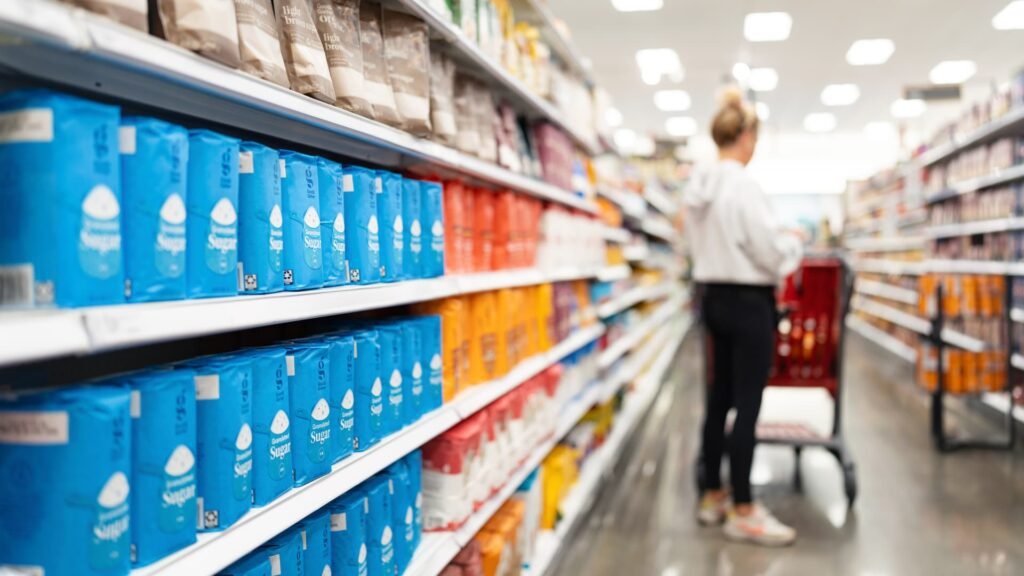

A Labor Department report released Wednesday showed inflation fell in August to its lowest level since February 2021. It also showed a key measure beat expectations, setting the stage for an expected 0.25 percentage point interest rate cut by the Federal Reserve.
The Bureau of Labor Statistics said the Consumer Price Index, a broad gauge of the cost of goods and services across the U.S. economy, rose 0.2% this month, in line with the Dow Jones consensus.
This brought the 12-month inflation rate to 2.5%, down 0.4 percentage points from July’s level and just below the 2.6% forecast, the lowest in three and a half years.
However, core CPI, which excludes volatile food and energy prices, rose 0.3% from the previous month, slightly above expectations of 0.2%. Core inflation over the 12-month period remained at 3.2%, as expected.
The small increase in core CPI is likely to keep the Fed on the defensive against inflation and rule out more aggressive rate setting when policymakers meet on Tuesday and Wednesday next week.
“This is not the CPI report the market wanted to see. Core inflation was higher than expected, making the Fed’s path to a 50 basis point rate cut more complicated,” said Seema Shah, chief global strategist at Principal Asset Management.
Stock prices fell following the report and Treasury yields were mixed.
In the federal funds futures market, traders are pricing in an 85% probability that the Federal Open Market Committee will approve a 0.25 percentage point (25 basis point) rate cut when it meets on Sept. 18, according to CME Group’s FedWatch index. A month ago, the market was leaning toward a 50-basis-point cut.
“While this figure is by no means an obstacle to policy action next week, the hawkish members of the committee are likely to view today’s CPI report as evidence that the final stretch of inflation will need to be approached with care and caution. This would be a strong case for a default of a 25 basis point cut,” Shah added.
The numbers suggest inflation continues to ease slowly, but housing-related costs remain an issue. The housing component of the CPI, which makes up about one-third of the index, rose 0.5%, accounting for about 70% of the core increase. The housing index rose 5.2% from a year ago.
Food prices rose just 0.1 percent, while energy costs fell 0.8 percent.
Elsewhere in the report, used car prices fell 1 percent, health services fell 0.1 percent and clothing prices rose 0.3 percent. Egg prices increased 4.8 percent.
The Bureau of Labor Statistics said in a separate report that real wages also rose this month, with average hourly earnings outpacing the monthly CPI increase by 0.2%. On a 12-month basis, inflation-adjusted average hourly earnings rose 1.3%.
But the Fed has been focusing its attention recently on a slowing labor market, with job creation since April slowing to nearly half the rate of the previous five months. Central bankers have said preventing a broader economic slowdown is as important as battling inflation, which hit its highest level in more than 40 years in the summer of 2022.
Regardless of what the Fed decides to do when it meets next Wednesday, markets are already pricing in lower interest rates. Two-year and 10-year Treasury yields in particular are at their lowest in more than a year. An inverted yield curve, an indicator of an economic recession, recently inverted and is often a harbinger of both Fed rate cuts and an economic slowdown.


10-Year Government Bond Yield
Wednesday’s report offered further evidence that inflation is weakening but still remains above the Fed’s 2% target, with prices remaining elevated or even rising in some areas.
“Inflation has eased, but the things people buy haven’t actually become less expensive,” said Lisa Sturtevant, chief economist at Bright MLS. “Prices have just risen at a slower pace. In fact, U.S. consumers are paying more than 20% more for goods and services than they were before the pandemic.”
For example, airfares rose 3.9% in August after declining over the previous five months. Auto insurance also continued to rise, increasing 0.6% to bring the 12-month increase to 16.5%. The cost of hospital and related services rose 0.4%, to 5.8% higher than last year.
At the same time, lower energy costs are helping to lower inflation: Gasoline prices fell 0.6% in August and are down 10.3% year-on-year, as part of a 4% drop in the energy index that also included a 12.1% drop in fuel oil prices.



